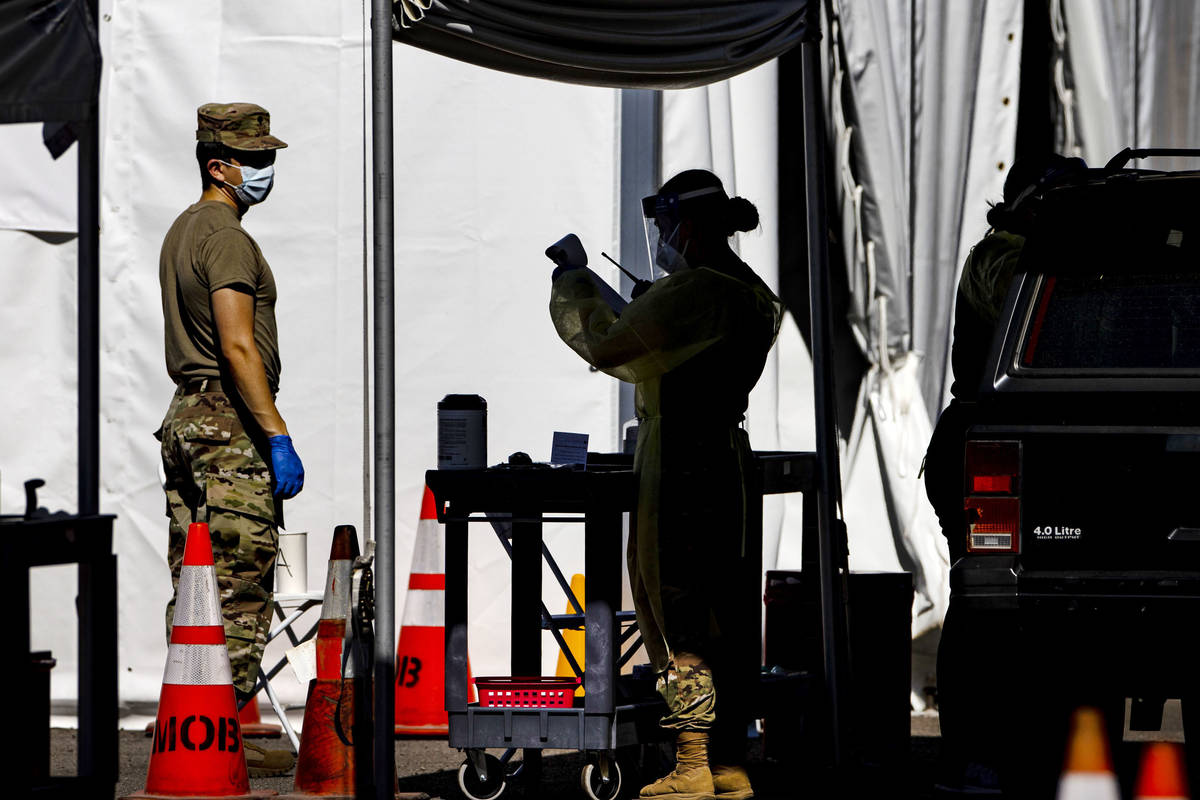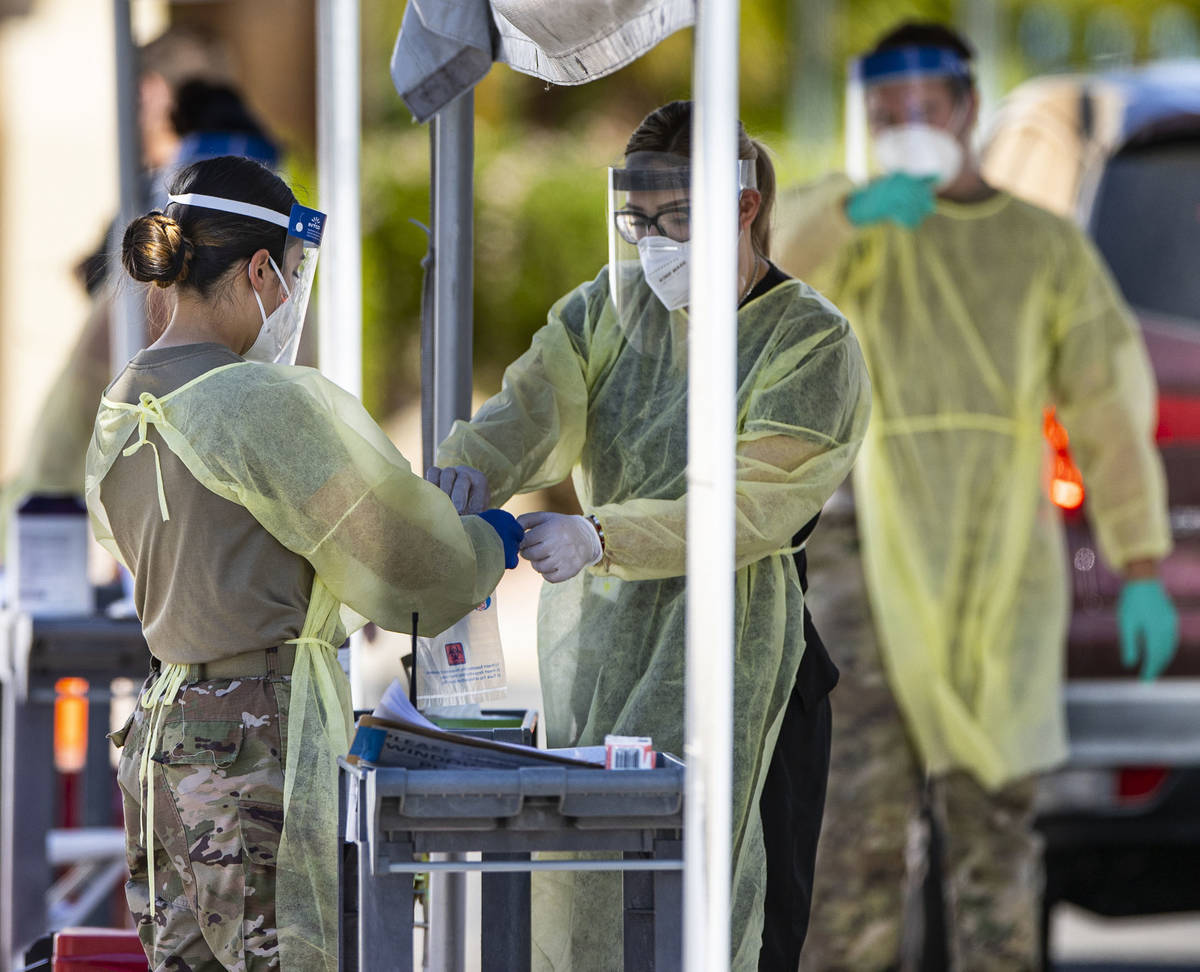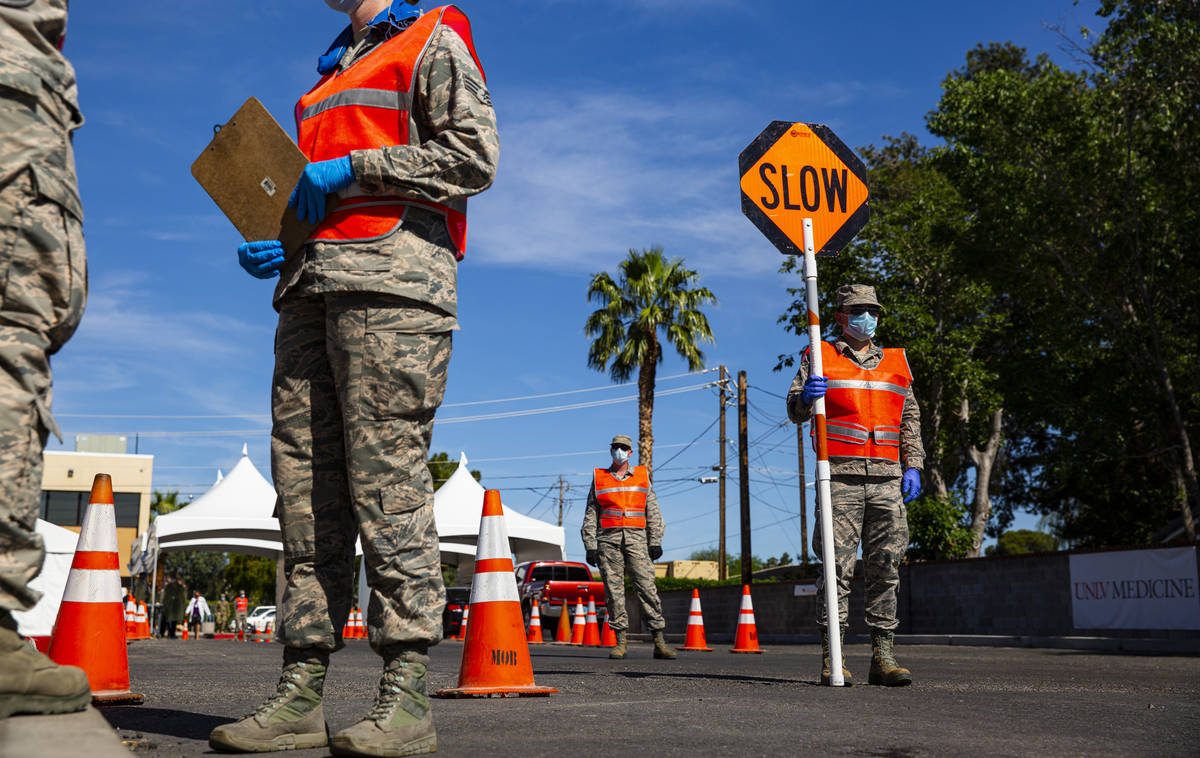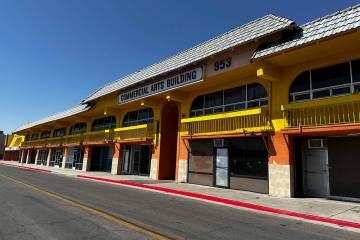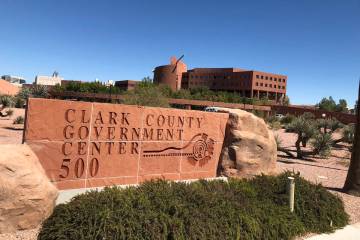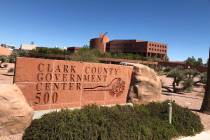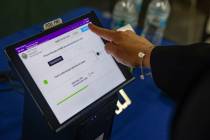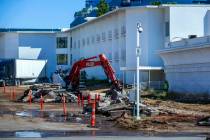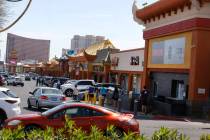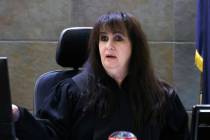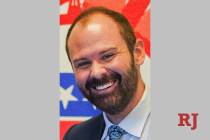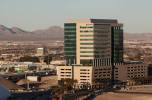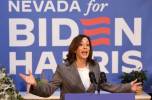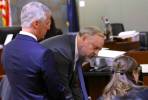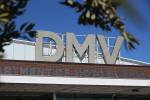Nevada COVID-19 testing gets boost from National Guard, strike teams, new sites
Plans are still being finalized to begin widespread coronavirus testing in Southern Nevada, including the use of “strike teams” to target susceptible communities as well as the creation of new testing sites.
But an announcement on new sites could come as soon as Friday, Clark County spokesman Erik Pappa said Wednesday.
The initial ramp-up “will be focusing on hot spots based on our data and some geographic mapping that we’ve put together, to target areas in our community that are at higher risk,” said Mike Johnson, director of the Southern Nevada Health District’s community health division.
The health district and partner agencies also plan to initially target susceptible populations, including certain minority groups, individuals 65 and older and skilled nursing facility residents, Johnson said at a Wednesday teleconference briefing for reporters. Geographic areas to be targeted include areas of Las Vegas and North Las Vegas that have shown higher case volumes.
In addition to strike teams, the district plans to use mobile clinics and drive-thru locations to expand testing.
Widespread testing has been touted by everyone from President Donald Trump to Gov. Steve Sisolak as a key to reopening states for business and returning communities to some level of normalcy. Yet testing volume in Nevada has remained stagnant for weeks, and details are only now emerging on the plan to increase test numbers.
The state is involved in evaluating additional sites for testing and coordinating logistics, such as securing supplies and lining up personnel, said Maj. Gen. Ondra Berry, adjutant general of the Nevada National Guard, which will play a major role in the expansion.
The state wants to “double the capacity of our ability to test people,” he told the Review-Journal on Tuesday.
“That’s how we’ll be best able to find out what’s truly going on in our state,” Berry said. “That also gives the governor the right information to make the best decisions about what we can do as a state in terms of reopening” for business.
He added that an additional 100 guardsmen were activated this week and will be assigned to one or more of the new testing sites.
About 50 guardsmen already have been tasked to assist with drive-thru testing by UNLV Medicine, the clinical arm of the UNLV School of Medicine.
That has helped the operation increase its testing to about 300 tests a day, said Dr. Michael Gardner, vice dean of clinical affairs at UNLV School of Medicine, noting that there no longer is a waiting list for appointments.
Gardner said that UNLV, the health district, University Medical Center, the National Guard and the Clark County Fire Department will be involved in creating “half a dozen more” test centers, which could begin opening as early as next week.
Labs ready for more
Lab capacity across the state already has been increased to accommodate more testing.
The Nevada State Public Health Laboratory in Reno, which can process about 500 tests per day, has operated at capacity only three of the past seven days, its director, Mark Pandori, said on Tuesday. By the end of the week, its capacity is expected to double.
But state and county health agencies will “need to set up screening programs for our specimen volumes to go higher,” Pandori said.
Widespread testing will require not only adequate testing supplies, which have been in short supply, but also locations for testing and personnel.
The logistical challenges can be complex. “You can’t just snap your fingers and get everybody tested,” Pandori said.
The health district is preparing to increase the capacity at its lab in Southern Nevada from 300 tests per day to 400.
UMC, the state’s largest public hospital, increased its laboratory capacity to where it could now process 1,500 tests per day.
However, between the hospital and its quick care clinics, UMC is still processing just 150 tests a day — one-tenth of capacity — said Dr. Luis Medina-Garcia, an infectious disease physician at the hospital.
UMC lab capacity is expected to increase to 4,000 tests a day by the end of the week and to 10,000 a day by June 1.
Medina-Garcia said state and county public health agencies are taking the lead to determine how the rapid increase will be accomplished.
Public information officers for state government declined to answer specific questions about the broad plan to increase testing volumes, but they emailed a statement.
“The governor has previously said that increasing our COVID-19 testing volume is one of our immediate and long-term goals, and doing so is challenging, as has been demonstrated across the country,” said Meghin Delaney, a spokeswoman for the state government’s COVID-19 response.
The key reason for increasing testing is to ensure that a person can be checked as soon as symptoms develop, said Dr. Shadaba Asad, UMC’s medical director of infectious disease and a member of the governor’s medical advisory team. This way, if a person tests positive, personal contacts can be notified and quarantined to prevent further transmission.
“If that person with symptoms can’t get a test for the next week, imagine how many people that person is going to spread the disease to,” Asad said at a teleconference town hall meeting on Tuesday sponsored by Clark County.
Because of shortages, tests initially were limited, for the most part, to those with the most severe symptoms.
“Now the recommendation is that absolutely anyone with symptoms should get tested for COVID symptoms,” she said.
The Nevada Department of Health and Human Services sent a bulletin to health care providers last week advising them of changes to testing criteria that include all patients with symptoms.
“It is essential to expand COVID-19 laboratory testing to include all patients exhibiting symptoms consistent with COVID-19 infection and ensure a more robust approach to rapid infection control and containment within our state,” the bulletin states.
More testing, more positives
As more people, including those with mild symptoms, are tested, the public should expect to see an uptick in new cases, said Brian Labus, an assistant professor in UNLV’s School of Public Health and, like Asad, a member of the governor’s medical advisory team.
“If you’re testing more people, you’re going to find more disease,” he said, even though that may be milder forms of illness.
That increase poses “one of the challenges in terms of determining if we’ve actually had that 14-day decline” in new cases that has been set as a benchmark for beginning to roll back some of the emergency measures aimed at thwarting disease transmission, he said.
But Labus said the state is looking at other figures in its analysis, including COVID-19 hospitalizations, which may give a “better idea of what’s actually occurring in the community.”
Since new cases have begun to level off, “I would expect those numbers of hospitalized cases not to increase, despite all this additional testing,” he said.
Contact Mary Hynes at mhynes@reviewjournal.com or 702-383-0336. Follow @MaryHynes1 on Twitter. Contact Briana Erickson at berickson@reviewjournal.com or 702-387-5244. Follow @ByBrianaE on Twitter. Review-Journal staff writer Michael Scott Davidson contributed to this report.



